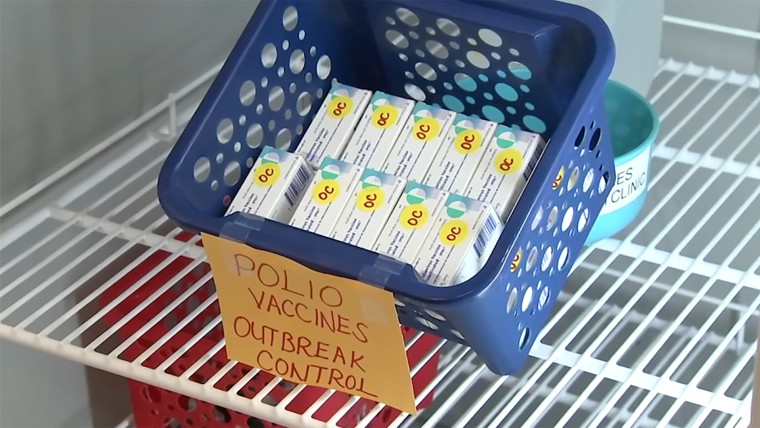Health officials found poliovirus in New York City wastewater, the city’s Department of Health and Mental Hygiene announced Friday. That means polio is likely circulating undetected in the city.
The virus was previously detected in wastewater samples from Orange County and Rockland County, north of the city, in May, June and July. One case of paralytic polio was identified in Rockland County last month, in an unvaccinated adult.
“The risk to New Yorkers is real, but the defense is so simple — get vaccinated against polio,” New York City Health Commissioner Dr. Ashwin Vasan said in a statement.
The Centers for Disease Control and Prevention recommends a three-dose series of vaccinations in early childhood, plus a booster dose from 4 to 6 years old.
Most people get those shots as part of their routine childhood immunizations. In New York City, around 86% of children ages 6 months to 5 years old have received all three doses. Statewide, 79% of New Yorkers have received three or more doses by age 2.
But polio vaccination rates are far lower in Orange and Rockland counties, at around 60% among children under 2 years old.
New York State Health Commissioner Dr. Mary Bassett said the discovery of polio in New York City wastewater was “alarming, but not surprising.”
“For every one case of paralytic polio identified, hundreds more may be undetected,” Bassett said in a statement.
The Rockland County patient was infected with vaccine-derived polio, a strain linked to live, weakened virus used in an oral polio vaccine that is no longer administered in the U.S.
A person who takes the oral polio vaccine can briefly shed live virus, so if a community has a low vaccination rate, the virus can then spread. If it circulates widely enough, it can mutate to be more virulent.
“We need to do some sewer surveillance to find out exactly how extensive it is,” said Vincent Racaniello, a microbiology and immunology professor at Columbia University. “I would guess that in the major cities where people are traveling from countries where they’re using the infectious vaccine, you’d find it in the sewers.”
Polio is highly infectious, but around 72% of people infected have no visible symptoms, according to the CDC. Another 25% may develop flulike symptoms that tend to resolve within days. Polio only rarely causes permanent paralysis of the arms and legs. It can also result in meningitis (swelling of the brain and spinal cord membranes) or paresthesia (the feeling of pins and needles in the legs).
The CDC estimates that 2% to 10% of cases of paralytic polio among children are fatal. Among adolescents and adults, the fatality rate is higher: 15% to 30%.
Source: | This article originally belongs to Nbcnews.com











